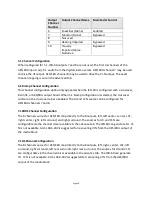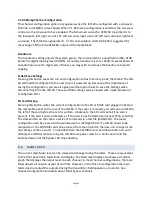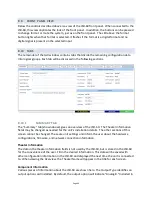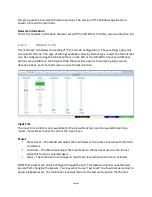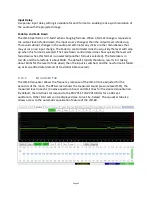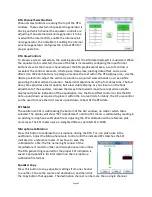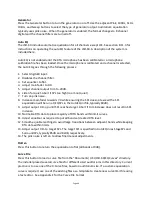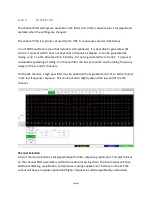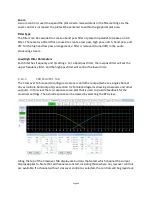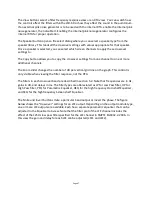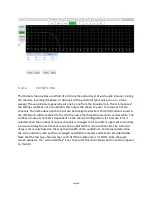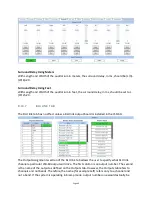
Page 52
Mountain
-‐7:00
MST
MDT
Central
-‐6:00
CST
CDT
Eastern
-‐5:00
EST
EDT
Note: Worldwide time zones may be viewed at the following websites:
•
http://www.timeanddate.com/library/abbreviations/timezones/
•
http://en.wikipedia.org/wiki/List_of_time_zones_by_UTC_offset
Network Time Protocol
This section also allows the IP address of the Network Time Protocol server to be set and
enabled or disabled. If an NTP server is available on the network, enter its IP address, check NTP
Enable, and press the Set IP button.
SNMP Community Settings
This section allows the Write and Read community settings to be viewed or changed. The JSD-‐
60 does not currently use the write community setting since the JSD-‐60 cannot be controlled
over SNMP, only monitored. The contact, system description, and location information
reported over SNMP can also be set. Read and Write community strings are limited to 8
characters each. Contact, description, and location are limited to 39 characters each.
Unit Status
This portion of the global tab shows the temperature within the JSD-‐60, whether the optional
DI-‐84 board is present, and the status of AES/EBU inputs. The DI-‐84 board is required to decode
Dolby Digital® and DTS® from two channel inputs. AES/EBU status is read every two to three
seconds, and the status indicators are updated. Green indicates the parameter is true. Red
indicates it is false. Gray indicates it cannot be determined. As noted AES 4 may indicate a red
status when a digital two-‐channel or encoded multichannel (COAX and TOSLINK) source is idle
and not streaming audio data. When the audio is present, the sampling rate is indicated next to
the decode status results.
Power On Format
These buttons determine which format will be selected the next time the JSD-‐60 is powered up.
The power on format can be a specific format or can be the format that was active when the
JSD-‐60 was powered off.
8.10.9
ADVANCED TAB
Analog and digital inputs to the JSD-‐60 need to be routed to the appropriate outputs based on
the selected format, the auditorium speaker configuration (channel config), and stereo decode
options. This is often done with a switch matrix, but the JSD-‐60 uses a mixer matrix. The mixer
matrix allows inputs to be routed to outputs or combinations of inputs to be scaled and routed
to outputs. The scaling factors (mixer coefficients) may range from -‐100% to + 100%. A mixer
coefficient is set to 100% to route the input to the output at full level. It is set to 0% to not use
that particular input on the output. It is set to -‐100% to route the input to the output with the

